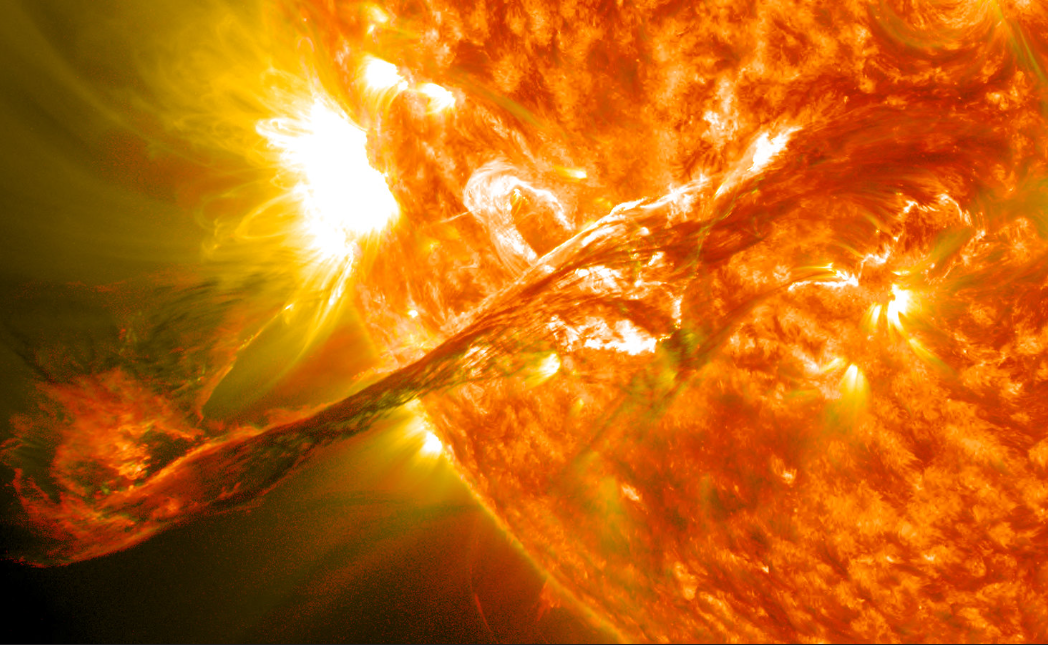Several days after considerable solar storms hit Earth, creating glowing northern lights in unusual places, the sun produced its biggest flare in its 11-year solar cycle and of the past twenty years.
Though luckily this event is not dangerous, as Earth should be out of the line of fire this time because the flare erupted on a part of the sun rotating away from Earth- and is still going.
“Not done yet!” the National Oceanic and Atmospheric Administration announced in an update on the solar flare.
According to the NOAA, the sun is almost at the peak of this particular solar cycle.
NASA’s Solar Dynamics Observatory captured the bright flash of the X-ray flare, the strongest since 2005.
The latest flare occurred just before 1 p.m. ET, NOAA’s Space Weather Prediction Center said, with an X-class rating of X8.7. X-class solar flares are the strongest of solar flares, which are described by NASA as “giant explosions on the sun that send energy, light and high speed particles into space.” According to the center, the flare was an R3 or “strong” flare, meaning it could have caused wide area blackouts of high-frequency radio communications for about an hour on the sunlit side of Earth. It also may have caused low-frequency navigation signal issues for the same period of time.
Bryan Brasher at NOAA’s Space Weather Prediction Center in Boulder, Colorado said it may turn out to have been even stronger when scientists gather data from other sources.
This solar event follows a week of flares and mass ejections of coronal plasma that threatened to disrupt power and communications on Earth and in orbit. Though an ejection linked to Tuesday’s flare appeared to have been directed away from our planet, yet analysis is ongoing, said Brasher.
NASA said the weekend’s geomagnetic storm caused one of its environmental satellites to rotate unexpectedly because of reduced altitude from the space weather, and go into a protective hibernation known as safe mode. At the International Space Station, the seven astronauts were advised to stay in areas with strong radiation shielding, however NASA says the crew was never in any danger.
Earth is currently in Solar Cycle 25, which began in 2020. According to the National Weather Service, the last cycle had an average length of 11 years and was one of the weakest to occur in a century.
While the current solar cycle is also predicted to be fairly weak, NOAA officials reported seeing “a steady increase in sunspot activity” from its beginning.












